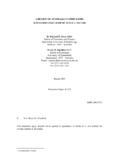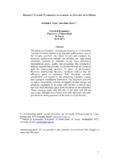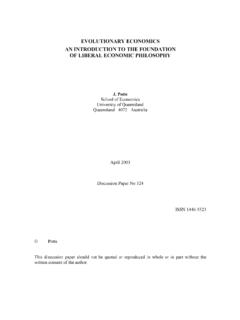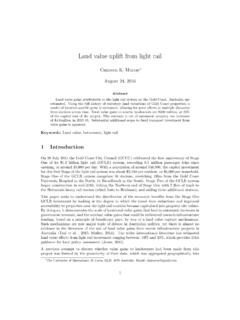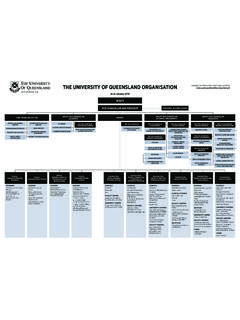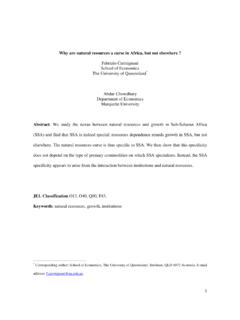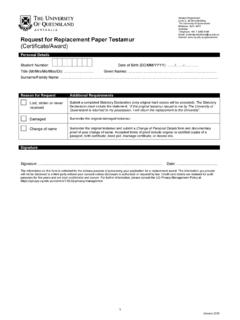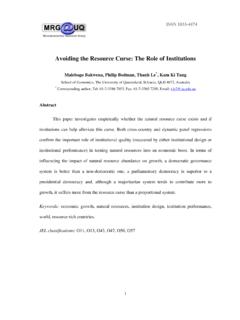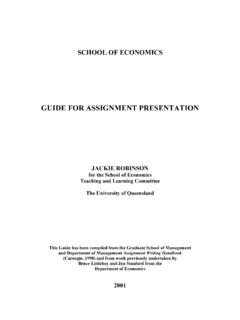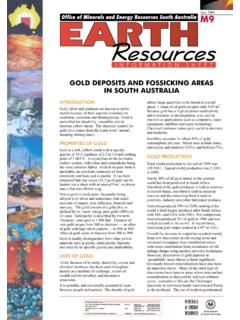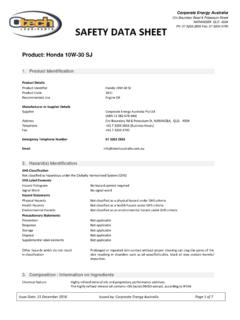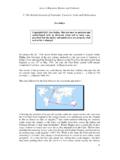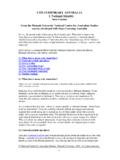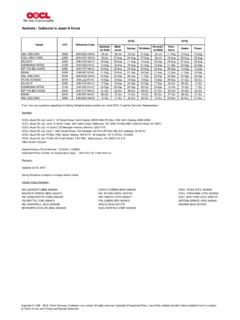Transcription of The Supply of Doctors in Australia: Is There A …
1 The Supply of Doctors in australia : Is There A Shortage? Abhaya Kamalakanthan & Sukhan Jackson. The Supply of Doctors in australia : Is There A Shortage? Discussion Paper No. 341 , May 2006, School of Economics, The University of Queensland, Queensland Full text available as: PDF - Requires Adobe Acrobat Reader or other PDF viewer. Abstract Many countries around the world are presently reporting a shortage of Doctors . To understand the situation better, this paper reviews the current English language literature on the Supply of Doctors in developed and developing countries with a special interest in australia .
2 The definition of doctor shortage and the accepted ratio of patients to full-time equivalent (FTE) Doctors that is followed in this paper, is the one that is provided by the Australian Government s Department of Health and Ageing. The issue of Supply imbalance with respect to Doctors is one that is particularly controversial in australia , with some policy-makers arguing that it is a problem of under-utilisation of existing Doctors , not under Supply . The paper focuses on the literature on (1) mobility issues relating to geographical and sectoral imbalances, (2) incentive issues (monetary and non-monetary) relating to medical specialisation imbalance and (3) government regulation issues relating to geographical, sectoral and professional specialisation imbalances.
3 The paper offers some suggestions to deal with the problem of Supply imbalance. One of the key findings is that developed countries such as australia cannot continue to rely on foreign-born overseas trained Doctors to fill the gaps in Supply . Hence, to solve the medical workforce crisis, australia will have to increase the number of Doctors being trained. EPrint Type: Departmental Technical Report Keywords: Doctor, general practitioner, Supply imbalance, australia , mobility, migration, barrier to entry, regulation, incentive, training Subjects: 340204 Health Economics ID Code: JEL Classification I10, I11, I18, I19 Deposited By: Weaver, Belinda Abhaya Kamalakanthan* and Sukhan Jackson School of Economics The University of Queensland Brisbane Qld 4072 australia Email: Corresponding author Abhaya Kamalakanthan, School of Economics, University of Queensland, St Lucia, QLD, australia , 4072.
4 Ph (+617) 3346 9456. Email ISSN 1445-5523 1 1 INTRODUCTION Many countries around the world are presently reporting a shortage of Doctors . One such country is australia . The usual reasons given for a shortage of Doctors in economically developed countries like australia and Canada include an increase in the number of physicians migrating to other countries, the early retirement of the baby-boomer generation of Doctors , and reduced hours worked by those Doctors opting for a more relaxed lifestyle.
5 In addition, some Doctors these days are also choosing less demanding specialties, and restricting their practices to particular types of cases or services (Stoddart & Barer, 1999). The definition of doctor shortage this paper follows is provided by the Australian Government s Department of Health and Ageing. The department defines a district of workforce shortage as a geographic area in which the population s demand for healthcare is not fully met. Population demands are considered not fully met when a community has less access than the national average to medical services.
6 In other words, in a district of workforce shortage, the ratio of full-time equivalent (FTE) Doctors to patients would be greater than :1,000 (Australian Department of Health and Ageing, 2005). We accept that this ratio of patients to FTE Doctors as set by the Australian Government is the official measure of over and under Supply in this country. Thus in australia , districts of workforce shortage are regional rural and remote areas, as well as outer metropolitan areas in capital cities that are experiencing doctor shortages (Australian Department of Health and Ageing, 2005).
7 2 The OECD (Organisation for Economic Co-operation and Development), of which australia is a member, accepts that its member countries have different benchmarks by which physician shortages and surpluses are defined. This benchmark could be a minimum physician-to-patient ratio or a target number of physicians per capita in rural or deprived urban areas (Simoens & Hurst, 2006). In England for example, the National Health Service Plan has set a target of FTE primary care physicians per 1,000 population weighted for need in each area of England (Secretary of State for Health, 2000).
8 Similarly, in the , a range of physician requirements of to primary care physicians per 1,000 population has been proposed (Council on Graduate Medical Education, 1994). Of relevance to policy-making is the point raised by Hawthorne & Birrell (2002), along with other observers such as Prideaux (2001) that australia is experiencing a doctor shortage today because of policy choices made in the past. Throughout the past decade medical workforce planning in australia has been dominated by the view that There are too many Doctors (Hawthorne et al.)
9 , 2002, p. 55). Concerns were raised in 1992 at australia s persistent over Supply of Doctors , with doctor/patient ratios increasing by approximately 67% over a 20 year period (Hawthorne et al., 2002). A major condition that led to this perceived over Supply was an increase in the number of foreign-born overseas trained Doctors securing professional registration. 3 However, the issue of surplus is controversial. Hawthorne et al. (2002) argue that various past policies have resulted in a considerable reduction over the years in the number of Doctors , and general practitioners (GPs) in particular.
10 Some government officials and medical school representatives agree with this standpoint but There are others who Rather, they argue that the problem appears because existing Doctors are being under-utilised, not because There is an under Supply . To understand the situation better, we review the current literature on the Supply of Doctors in developed and developing countries with a special interest in australia . Where relevant, we will focus on the Supply of the GP - defined by the Royal Australian College of General Practitioners (RACGP) as a medical practitioner who provides primary comprehensive and continuing care to patients and their families within the community (Britt, Miller, Knox, Charles, Valenti, Henderson, Pan, Sutton & Harrison, 2002).
